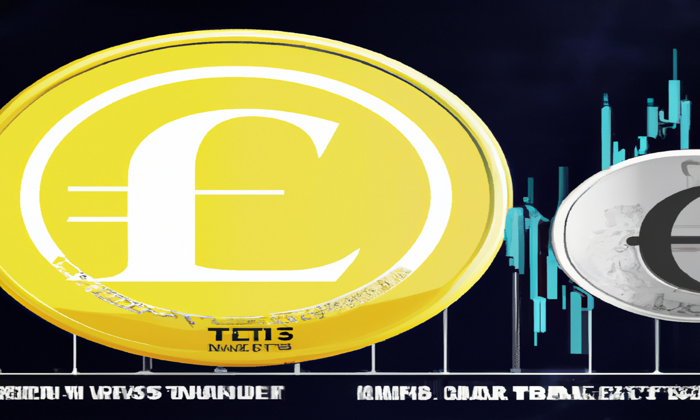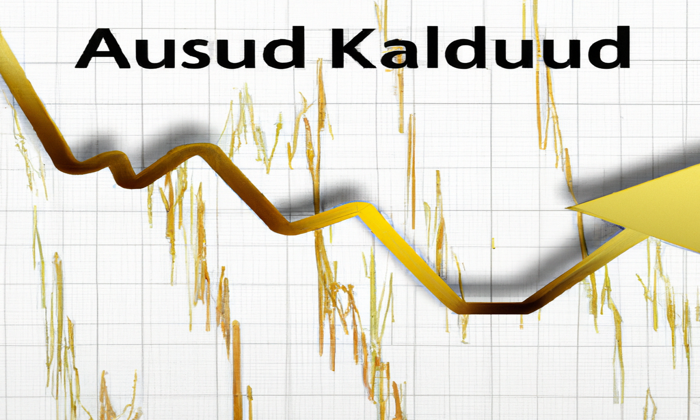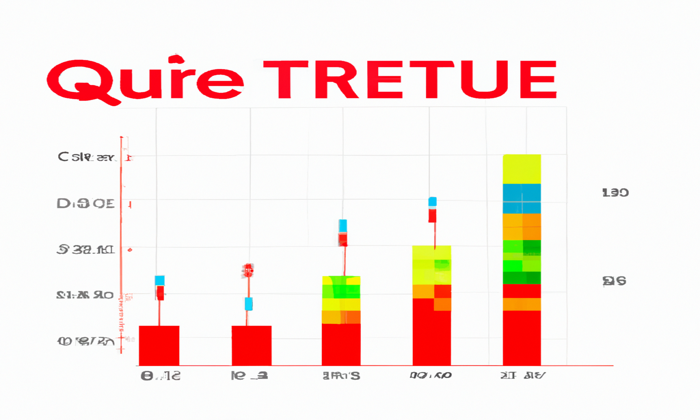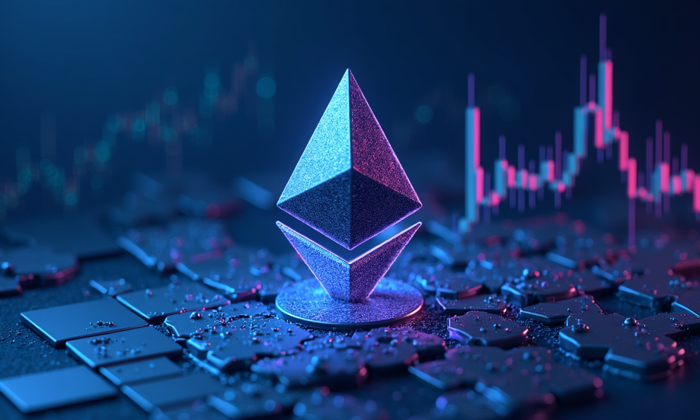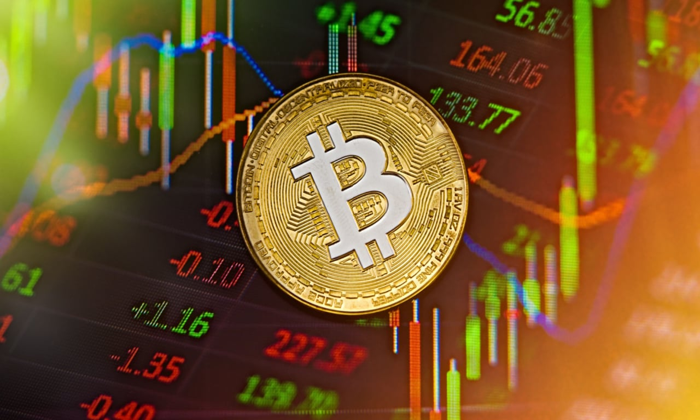The EURC stablecoin, a pioneering euro-based digital currency developed by Circle, has recently achieved a remarkable milestone with a supply hitting $248 million, reflecting significant market interest. As traders flee the dollar due to mounting economic uncertainties, the appeal of the EURC stablecoin has surged, positioning it as a leading alternative in the expanding euro-based stablecoin landscape. This shift highlights recent stablecoin market trends, where investors increasingly seek refuge in assets that reduce their exposure to U.S. dollar fluctuations. With ongoing concerns over inflation and trade tariffs threatening the dollar’s stability, the EURC stablecoin emerges as a compelling option for European and Asian traders. By optimizing for stability and compliance, Circle’s EURC may very well reshape the dynamics of the USD vs EURC landscape in the near future.
Circle’s innovative euro-backed digital asset, EURC, is making waves in the world of cryptocurrencies as it captivates traders navigating the treacherous waters of increasing dollar volatility. In a marketplace where uncertainty looms large, market participants are shifting their focus toward euro-based digital currencies that promise stability without the geopolitical risks associated with U.S. dollar dependency. The evolving landscape of stablecoins showcases the need for alternatives like EURC, particularly as trade tensions heighten and influence financial decisions. This compelling euro-denominated asset’s rise reflects broader trends within the cryptocurrency sector, where many investors are looking for reliable solutions in light of fluctuating economic conditions. As the global market continues its transformation, EURC stands poised to solidify its place among the top contenders in the decentralized finance ecosystem.
The Rise of Circle’s EURC Stablecoin
Circle’s EURC has recently hit a remarkable supply milestone, reaching $248 million, which sets it apart as the leading euro-euro-based stablecoin. This growth has been fueled by a significant shift in trader sentiment as many look to distance themselves from the volatility of the U.S. dollar. The increasing adoption of EURC highlights an emerging trend within the stablecoin market: traders are increasingly favoring alternatives that mitigate geopolitical risks associated with the dollar amidst ongoing economic uncertainty. As stablecoins like EURC gain traction, they are reshaping the landscape of digital currency in Europe and beyond.
Moreover, the exceptional rise of EURC can be attributed to a combination of factors, especially the euro’s strengthening against the dollar. With experts noting that the dollar has depreciated from $0.98 to $0.88 against the euro, the attractiveness of euro-based stablecoins has only increased. This dynamic is attracting not only casual investors but also major traders who are turning to EURC as a stable store of value and transactional currency, further solidifying its market presence.
Traders Fleeing the Dollar: A New Market Trend
The recurring theme of traders fleeing from the dollar underscores a profound shift in the global financial landscape. As tariffs and trade relations continue to fluctuate, many traders are opting for stablecoins that provide stability in times of uncertainty. Circle’s EURC is emerging as a popular choice for those looking to hedge against dollar devaluation. This shift away from the dollar signifies a notable trend impacting not just the euro-based stablecoin sector but also the broader financial markets.
In recent months, the stablecoin market has faced significant changes, aligning with heightened economic tensions between the United States and its trading partners. This trend is leading many to reconsider their reliance on USD-backed stablecoins. While Tether’s USDT remains dominant in the market, the allure of alternatives like EURC is gaining momentum, as it offers a compliance-focused option in line with EU regulations. Such changes in trader behavior will continue to influence stablecoin dynamics and could reshape the future of digital currencies.
Market Dynamics: EURC vs USD-backed Stablecoins
The competition between EURC and USD-backed stablecoins paints a vivid picture of where the market is heading. Despite EURC’s impressive record in supply and compliance with EU regulations, the majority of the stablecoin market remains dominated by USD-based options. Currently, USD-backed stablecoins account for a staggering 99% of the global stablecoin supply, underscoring the entrenched position of established players like Tether’s USDT.
However, with the growing challenges faced by USD-backed stablecoins amid regulatory pressures and market fluctuations, EURC’s rise presents a potential shift in trend. As more European investors seek compliant and stable alternatives, DETH’s potential to capture a larger market share could significantly reshape how stablecoins operate globally. This tug-of-war between USD and euro-denominated stablecoins will be pivotal to watch in the coming years.
The Impact of EU Regulations on the Stablecoin Market
The implementation of the EU’s MiCA regulations has been a game-changer for the stablecoin ecosystem, particularly for Circle’s EURC. The stringent compliance requirements set by MiCA emphasize transparency and reserve management, allowing EURC to establish itself as a trustworthy option in a market saturated with less compliant alternatives. These regulations have compelled many competitors, including Tether’s USDT, to rethink their strategies regarding European operations.
As a consequence of these regulations, EURC has garnered increased trust from investors who are wary of the opaque practices of some USD-backed stablecoins. This pushes EURC into a unique position where it can appeal specifically to a European audience that prioritizes compliance and security, starkly contrasting with the vulnerabilities associated with non-compliant alternatives. As the regulatory landscape continues to evolve, EURC’s ongoing adherence to these guidelines may establish it as the gold standard for euro-based stablecoins.
Comparative Analysis: EURC and Global Stablecoin Trends
When analyzing stablecoin trends, EURC stands out not just for its remarkable growth but also for its role in a shifting financial narrative. Global instability and the recent devaluation of the U.S. dollar versus the euro have set the stage for euro-denominated stablecoins to flourish. As EURC establishes its dominance in Europe, it is also influencing traders on a global scale, highlighting the importance of euro-based options in mitigating risk.
Furthermore, as traditional fiat currencies come under pressure, stablecoins like EURC are increasingly viewed as viable alternatives. With many traders looking to insulate themselves from possible inflation and global downturns, the demand for stablecoins backed by stable geopolitical entities enhances the relevance of EURC. This scenario illustrates a growing trend where market participants might favor stablecoins that reflect their regional economic conditions and reduce dependency on turbulent currencies.
Future Outlook: Is EURC the Future of Stablecoins?
Looking ahead, one cannot help but wonder whether EURC will become the preferred choice for traders in the evolving landscape of digital currencies. As regulatory frameworks like MiCA further crystallize, the potential for EURC to capture more of the market becomes increasingly plausible. Many experts predict that as more traders seek alternatives to USD-backed options, the demand for EURC and other euro-based stablecoins may see exponential growth.
Moreover, the continued fluctuation of the dollar could push even more traders towards a stablecoin like EURC, especially as its user base grows. This trend may prompt institutional investors to consider euro-denominated assets, leading to an innovative transformation of established trading practices. As such, Circle’s EURC could play an integral role in defining how stablecoins function in the global economy, representing not just a trend but a structural change in how digital currencies are perceived.
The Technological Infrastructure of EURC
A critical factor in the success of Circle’s EURC is its underlying technological infrastructure. Built on robust blockchain technologies like Ethereum, EURC benefits from a decentralized framework that provides enhanced security and transparency. Moreover, with significant liquidity being supported on various platforms, investors find it easier to trade EURC compared to many other euro-based stablecoins.
This technological backbone not only makes transactions seamless but also allows for integration with decentralized finance (DeFi) applications that are gaining traction in the cryptocurrency world. As more users familiarize themselves with blockchain technology, EURC’s appeal is likely to expand, particularly among tech-savvy traders who prioritize both safety and accessibility in their trading practices.
Understanding the Value Proposition of EURC
The value proposition of Circle’s EURC lies in its ability to combine the advantages of a stablecoin with the stability of the euro. As traders flee the dollar and face heightened economic uncertainties, EURC provides a hedge that is less susceptible to American geopolitical events. The euro-backed stablecoin market is evolving to minimize exposure and risks associated with the fluctuations of the U.S. dollar, presenting an attractive option for global investors.
Additionally, EURC’s compliance with European regulations not only enhances its credibility but also establishes it as a safe haven for investors looking for consistency. The growing community of users supporting EURC underscores its value to those seeking alternatives. This unique combination of euro stability and regulatory alignment could place EURC at the forefront of euro-denominated digital currencies.
Challenges on the Horizon for EURC
Despite its promising surge, EURC faces challenges that cannot be ignored. The dominance of USD-backed stablecoins in the financial ecosystem remains a significant hurdle that EURC must navigate. As Tether’s USDT and other USD alternatives continue to hold substantial market shares, convincing traders to switch to EURC will require a concerted education and marketing effort.
Moreover, potential changes in regulatory frameworks or economic conditions could impact EURC’s growth trajectory. New regulations could either bolster EURC’s advantages or present unforeseen obstacles, making it imperative for stakeholders to remain agile. As the stablecoin market continues to evolve, EURC’s ability to adapt to these challenges will play a crucial role in securing its position in the competitive landscape.
Frequently Asked Questions
What is Circle’s EURC stablecoin and its significance in the stablecoin market?
Circle’s EURC stablecoin is a euro-based digital asset that has emerged as a major player in the stablecoin market, especially following a surge in supply to an all-time high of $248 million. This positions EURC as the largest euro-denominated stablecoin, appealing to traders seeking alternatives to USD amid concerns regarding geopolitical and economic instability.
How has EURC performed in comparison to USD-based stablecoins?
EURC has seen impressive growth, particularly as the dollar depreciates against the euro, with a recent drop from $0.98 to $0.88. However, USD-based stablecoins still dominate the market, making up 99% of the total stablecoin supply, with Tether’s USDT alone accounting for 63% of it. Despite its growth, EURC’s market share remains much smaller than that of these USD-backed giants.
What factors are contributing to the rise of Circle’s EURC stablecoin?
Circle’s EURC stablecoin is rising due to various factors including traders fleeing the U.S. dollar amid trade uncertainties, macroeconomic instability associated with inflation, and stringent compliance with EU regulations under MiCA. This has made EURC a preferred choice for European investors looking for stability and compliance.
What is the importance of compliance with MiCA regulations for EURC?
Compliance with MiCA regulations is crucial for Circle’s EURC stablecoin as it fosters transparency and trust among users. These regulations have pushed out other competitors like Tether’s USDT from the European market, enhancing EURC’s appeal as a compliant alternative for euro-denominated transactions.
How does the supply distribution of EURC across blockchain networks look?
EURC has a diverse supply spread across multiple blockchain networks, with over half of its supply, approximately $127 million, on the Ethereum network, followed by $79 million on Solana, and $37 million on Base. Smaller shares are held on Avalanche and Stellar. This distribution enhances its accessibility and usability across different platforms.
Why are traders moving towards EURC and away from the dollar?
Traders are increasingly opting for Circle’s EURC stablecoin as an alternative to the U.S. dollar due to the dollar’s rising devaluation and continued geopolitical risks. Concerns about inflation and U.S. trade relations have driven this shift, making euro-based stablecoins like EURC more appealing for securing value.
What market trends are influencing the growth of euro-based stablecoins like EURC?
The growth of euro-based stablecoins such as EURC is influenced by rising market trends including traders’ flight from the dollar, macroeconomic uncertainties, and the implementation of regulatory frameworks like MiCA. These trends prompt investors to seek safer, compliant alternatives to USD-backed stablecoins.
What is the current market status of Circle’s EURC stablecoin?
As of now, Circle’s EURC stablecoin is valued at approximately $1.13 with a market cap of $212 million and a 24-hour trading volume of $72 million. Despite its growth, the broader market remains dominated by USD-backed stablecoins, representing a significant portion of the total stablecoin supply.
| Key Points |
|---|
| Circle’s EURC stablecoin reached a record high supply of $248 million as of April 15, 2025. |
| The growth reflects a migration away from the dollar due to trade uncertainties and geopolitical risks. |
| EURC is now the largest euro-denominated stablecoin, outperforming USD-based stablecoins like USDG. |
| Approximately 54% ($127 million) of EURC’s supply is on the Ethereum network, followed by Solana and Base. |
| The devaluation of the dollar against the euro has contributed to EURC’s market growth and attractiveness. |
| EURC complies with the EU’s MiCA regulation, which has driven other stablecoins like USDT out of the market. |
| Despite EURC’s growth, USD-backed stablecoins still dominate, comprising 99% of the global market. |
Summary
The EURC stablecoin, reaching an unprecedented supply of $248 million, signifies a vital shift in the market as traders increasingly turn away from the dollar amid ongoing geopolitical uncertainties. This trend not only highlights EURC’s compliance with stringent EU regulations but also showcases a growing demand for euro-denominated stablecoins as a safer alternative. As macroeconomic conditions continue to evolve, the preference for EURC is likely to reshape the landscape of stablecoins, even as USD-backed options remain predominant.
As the stablecoin market evolves, Circle’s EURC stablecoin has emerged as a significant player, recently hitting a remarkable supply of $248 million. This surge reflects a broader trend of traders fleeing the dollar, particularly in light of ongoing trade uncertainties affecting U.S. relations with Europe. The increasing popularity of EURC, a euro-based stablecoin, emphasizes a pivotal shift towards euro-denominated assets as investors seek alternatives amidst fluctuating geopolitical climates. With EURC positioning itself at the forefront of stablecoin innovations, it stands in stark contrast to the dominance of USD-centric cryptocurrencies, highlighting the dynamics of USD vs EURC in today’s financial landscape. This explosion in supply showcases how EURC is capturing the attention of traders, keen to navigate the changing stablecoin market trends.
Circle’s innovative creation, known as the EURC stablecoin, stands as a beacon in the rapidly expanding ecosystem of euro-backed digital currencies. This movement toward euro-denominated tokens signifies a strategic pivot from traditional dollar reliance, fueled by the macroeconomic pressures surrounding bilateral trade negotiations. As the demand for stable forms of digital currency grows, particularly in light of diminished confidence in the U.S. dollar, investors are increasingly looking at alternatives such as the EURC stablecoin. The relevance of this shift is underscored by the overall trends in the stablecoin landscape, where euro-based assets are gaining traction. Such developments are reshaping the financial terrain, making the EURC a focal point for traders navigating the complexities of international currency dynamics.
